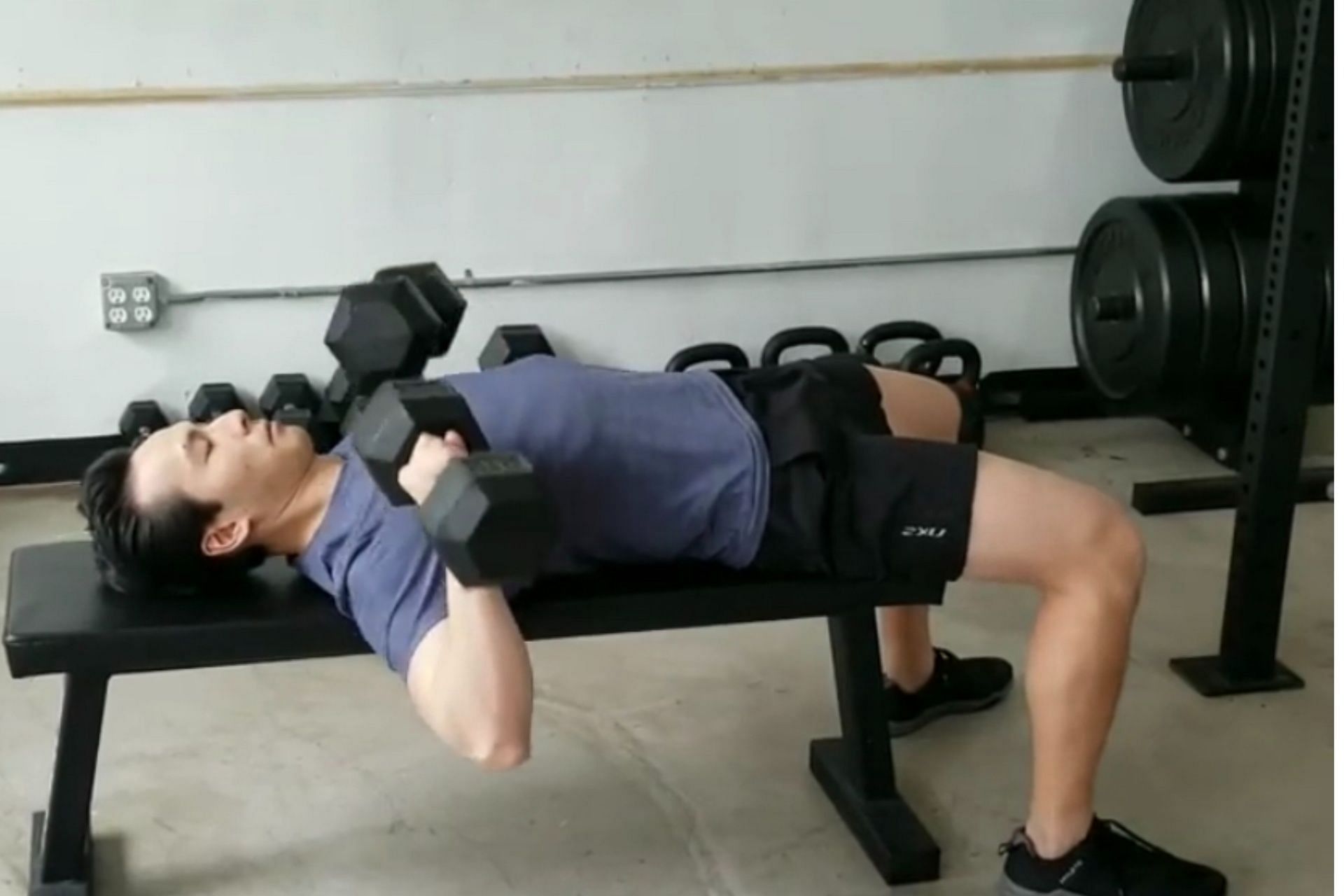The flat dumbbell fly, also called the dumbbell chest fly, is an isolation exercise for the chest muscles. It helps the muscles become stronger and more muscular while also offering various physical health benefits.
Considered a classic bodybuilding exercise, the flat db fly not only targets the chest but also works on surrounding muscles, including the triceps, shoulders, and arms. Practicing it daily improves upper body strength and reduces your chance of muscle injuries as well.
Read on to learn more about the flat dumbbell fly, including its benefits, steps, and variations.
Benefits of doing the flat dumbbell fly

The flat dumbbell fly exercise offers numerous advantages. In addition to strengthening the chest muscles, this exercise also works as a chest opener. This, in turn, helps keep upper back pain at bay, enhances your range of motion, and also eases chest tightness.
The flat db fly is also considered a great scapular retraction exercise because it improves your body posture, strengthens your shoulder muscles, and prevents shoulder injuries. When done correctly and consistently, the flat dumbbell fly can also:
- improve core strength and stability
- improve muscular balance
- provide better chest definition
- boost shoulder strength
- enhance upper-body strength and size
How to perform the flat dumbbell fly?
Here’s how you can do the flat bench dumbbell fly correctly:
Equipment required: a flat bench and a pair of dumbbells
Instructions:
- Lie flat on an exercise bench and place your feet on the floor and either side of the bench. Make sure your back and head are pressed firmly against the bench.
- Grab a dumbbell in each hand and slowly lift your arms up above your head. Do not lock out your arms, just extend them with a slight bend in your elbows.
- Now slowly lower the dumbbells using an arc motion until they get in line with your chest. As you do this, your arms should be properly extended to the sides but not locked out.
- Press the weight up in the same motion and repeat for a few reps.

Variations to try
To make the exercise more difficult, consider trying the two major variations of the flat dumbbell fly, namely the incline and decline dumbbell fly exercises.
Incline dumbbell fly
The incline angle used during the incline dumbbell fly provides a challenge to the movement while also focusing more on the upper pecs. To do this variation, you’ll need an incline bench and a pair of dumbbells.
To do:
- Grab a dumbbell in each hand and slowly lie down on an incline bench. Make sure the bench is inclined at about 30 to 40 degrees.
- Now with your arms at your sides at chest level, lift them up above your chest and then slowly lower them down to the sides.
- Continue to press the dumbbells a few times more.
Decline dumbbell fly
The decline dumbbell fly is an amazing hypertrophy exercise that isolates the chest and also targets the anterior deltoids, triceps, lower pecs, and core. If you are a beginner, go for lighter weights and higher reps for this variation.
To do:
- Grab a dumbbell in each hand and lie down on a decline bench. Make sure the decline is not more than 30 degrees.
- Keep the dumbbells close to your chest and then press them to lockout at the top.
- Retract your shoulders and lower the dumbbells to the sides at your chest level while maintaining a slight bend in your elbows.
- Reverse the movement again and go for the next rep.

If you are new to strength training, start with a lightweight dumbbell of not more than 5 pounds, as heavier weights during the initial days of training can compromise your form and lead to pain and injuries. Advanced exercisers, however, can consider using heavier weights and opt for 10 pounds or more.
Either way, the key to achieving the benefits of the flat dumbbell fly is to focus on executing the correct form and keeping each movement slow and controlled.

